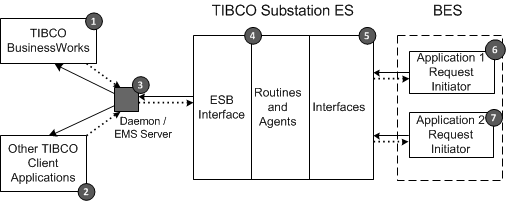High Volume Triggers
The CICS High Volume Trigger (HVT) capability is available for use when a high volume of messages or queue records are to be sent, or when more than 32 KB of information needs to be sent from applications.
HVT also provides ordered delivery of information and guaranteed message delivery. Information located in data or transient queues can be used with this facility.
Consider using the CICS HVT capability in Substation ES in the following scenarios:
- If you expect a high volume of messages or queue records to be sent from CICS regions.
- If users require ordered delivery of information.
- If applications must send more than 32 KB of information.
- If Enterprise Message Service is your transport and if you require guaranteed message delivery for triggered information.
- For business applications that demand a higher publishing throughput and might not be concerned with message loss if CICS terminates, the HVT option can make use of Temporary Storage Queues (TSQs) or Transient Data Queues (TDQs).
For more information about HVT, see TIBCO Substation ES Operations and Administration.
The following figure shows the message flow for CICS-initiated requests or replies:
- In a CICS-initiated request or reply, the initial request comes from an application in the BES in the z/OS environment. In this figure, the request initiates from Applications 1 or 2 (6 or 7). The path of the initial request is denoted by solid arrows.
- The request is received by Substation ES CICS Interface (5), passed to ESB Interface (4), and then sent to the messaging daemon or EMS server (3).
- The daemon or EMS server (3) sends the message to TIBCO BusinessWorks (1) or another TIBCO messaging client (2), depending on the message delivery criteria.
- The CICS application (1 or 2) waits for a response from the external messaging application. A timeout value specified by application 1 or 2 determines the length of time applications are prepared to wait for a response.
- In all these transactions, a result set or acknowledgment is returned, as denoted by the dotted arrows in this figure.
Copyright © Cloud Software Group, Inc. All rights reserved.

